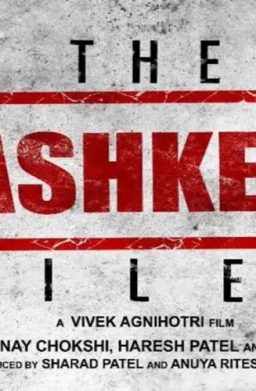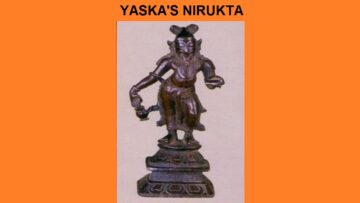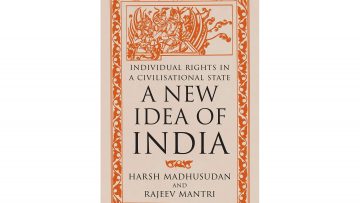One of the sad narratives of the modern India is that of a ‘disconnect’ – the disconnect between what most know instinctively as the reality and what is presented as part of a faux narrative in textbooks, public discussions, etc. This disconnect is visible at many levels in Indian discourse. One of them, undoubtedly, is history telling and it is also one of the most glaring one.
What we know as ‘common knowledge’ in history has been willfully omitted from historiography and what is taught in history textbooks doesn’t really reconcile with what most common folks grow up knowing about those facts. Several scholars, authors, public intellectuals including Dr. Meenakshi Jain, Sanjeev Sanjyal, Rajiv Malhotra, Arun Shourie, etc., have publicly talked about this ‘disconnect’ in their scholarly works as well as in public discourse. Vivek Agnihotri’s recently released film The Tashkent Files attempts to bridge that very disconnect on the death of Lal Bahadur Shastri through the popular art form of cinema and does it really well.
Independent India’s second Prime Minister Sri Lal Bahadur Shastri died on January 11, 1966 in Tashkent, the capital city of Uzbekistan in Soviet Russia. Riding high on his success against the Islamic Republic of Pakistan in the Indo-Pak war of 1965, Shastri was there in Tashkent to negotiate a peace settlement brokered by the Russians. After several days of bargaining and wrangling, Prime Minister Shastri and Pakistani President Ayub Khan signed on January 10, 1966, what is known as the Tashkent Declaration. At 1:00 hrs. on January 11, Shastri died of ‘heart attack’.
One of the unmistakable lacunas of this entire episode of Shastri’s death is the absence of a post-mortem report. While we have no record of a postmortem, either by India or the USSR, what we are left with is a mystery and many unanswered questions. Many, including Shastri’s family members, are not convinced about his ‘natural death’ theory and they allege a foul play. It may be a case of death due to some poisoning, they believe. Their belief receives some credence from Dr. Nirmalya Roy Chowdhury, a member of the American Board of Internal Medicine who likens Shastri’s death to Palestinian leader Yasser Arafat’s death. Arafat died suddenly in November 2004 due to some ‘mysterious illness’. Journalist and independent researcher Anuj Dhar in his book “Your Prime Minister is Dead” quotes Dr. Roy Chowdhury: “In 2012, with the permission of his widow Suha, Arafat’s body was exhumed by the Palestinian authorities. A thorough forensic investigation was done. Study results almost proved beyond reasonable doubt that he was poisoned with Polonium 210,”
Vivek Angihotri tries to bring out all the idiosyncrasies of this case in a gripping cinematographic undertaking and he nails it. The story starts a bit slowly but picks up the pace along the way. The director is able to extract clutch performances from its entire crew. Shweta Basu Prasad, Pallavi Joshi, Naseerunddin Shah, etc. — they all put up a masterful performance. But Mithun Chakrobarty, who plays the role of the cunning politician Tripathi, steals the show on the screen. To me, it seemed like he was having the most fun with his role.
The film also gets into its own political narrative, the kind of narrative the Mumbai film industry seldom talks about. It makes important references to the Emergency and the subversion of the Indian Constitution by inserting ‘Socialist’ into it. It however, skips over the other similar insertion, namely ‘Secular’. Being a child of the 70s growing up in Patna, I had the front row seat to many of the incidents of the dark days of Emergency and the historic JP Movement when arrests, curfew, MISA, forced mass sterilization, etc., were the order of the day.
The movie also talks about ‘second colonization’ and makes overt reference to the Leftist takeover of the intellectual space in India. It does not take much to recognize this effect but being a former student of JNU certainly helps understand this subversion. Within a few years of Shastri’s death, in 1969, the Indian National Congress of A. O. Hume, Dadabhai Nauroji, Tilak , and Gandhiji was split owing to its internal power struggles and contradictions. Already the Prime Minister of India, Indira Gandhi was 45 seats short of a majority in the Lok Sabha. She turned to the Communist Party of India (CPI) for support. The communists were too eager to oblige — but not without a price. Under this “support” plan, an openly Leftist historian and academic was made the Education Minister of India in 1971. Nurul Hasan’s policies ensured a Leftist stranglehold over the JNU faculty that it is yet to overcome. This same policy was executed in all educational institutions throughout the nation.
A reference to KGB archivist Vasili Mitrokhin to give an idea of Russian involvement in India is the key component of the movie plot. But Agnigotri may have to make another movie to do justice to the Mitrokhin Files. However, the Metrokihn Files reference backs up many of the claims made by the former KGB spy Yuri Bezmenov. Bezmenov famously uses the word ‘useful idiots’ to describe the ‘intellectuals’ who were doped by the KGB without much pretense to it.
The movie also makes a brief reference to Netaji Sabhas Chandra Bose. PM Shastri wanted to set up an inquiry to look into the disappearance of Netaji. A Congress functionary had told this to the Khosala Commission. The Commission was set up to investigate the mysterious death of Netaji. Shastriji is said (by his son Sunil Shastri) to have met Netaji in Tashkent and he wanted to ‘speak’ to the people of India upon his return. The very thought that the two most intriguing deaths of modern India may have some connection is a reason enough to give anyone Goosebumps.
The story of Shastri is more important for the millennials. Already two generations of Indians have grown up without knowing much about leaders beyond Gandhi-Nehru dynasty. Towering leaders like Tilak, Savarkar, Bose, Patel, Ambedkar, Shastri, Rajgopalachari, etc., have been relegated into virtual oblivion. As D.K, one of the moviegoers at the local cineplex in Chicago suburb of South Barrington told me: “Vivek Agnihotri does a remarkable job in bringing to the fore not just the death of a Prime Minister of a nascent Republic but also his memory and his life back in the consciousness of the Indian nation almost 53 years after his death.” His seldom known role as an economic reformer (he discontinued the socialist policies of Nehru) and a catalyst to India’s Green Revolution finds mention in the film. Despite being killed twice, as the film rightly proclaims, Vivek’s new venture ensures that Shastri’s legacy lives on, notwithstanding the unresolved mystery of his death.
Disclaimer: The opinions expressed in this article belong to the author. Indic Today is neither responsible nor liable for the accuracy, completeness, suitability, or validity of any information in the article.











